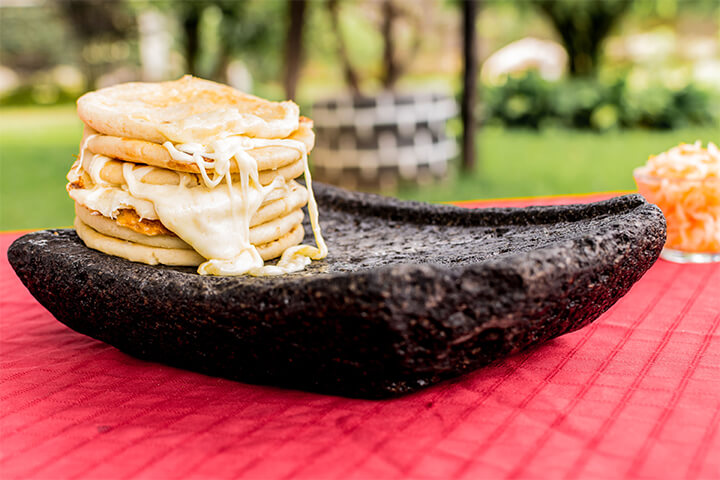Beyond delicious dishes, warm hospitality, and spices like no other, Hispanic culinary traditions offer profound insights that resonate far beyond the dining table.
For National Hispanic Heritage Month (September 15th – October 15th), we explore three lessons gleaned from Hispanic food cultures that have had an incredibly positive impact on the culinary scene of the United States.
Celebrate Regional Diversity

The immense scale of Hispanic regions has led to a multitude of culinary styles, each with its own unique specialties, adapted to local ingredients and climates. This diversity has been recognized and protected through various legal mechanisms, including Geographical Indications (GIs). GIs are legal terms used to identify products that originate from a specific geographical area, providing economic benefits to producers and communities associated with these products while safeguarding their reputation and quality.
A well-known example of a regional product protected by GIs is tequila in Mexico. Only tequila produced in specific regions of Mexico, primarily Jalisco, can legitimately be labeled as such. These efforts prevent unauthorized or counterfeit products from diluting the reputation of the authentic spirit.
Peruvian Gastronomic Heritage
Peru is another notable example. Protections are in place for a range of traditional Peruvian dishes that also recognize the importance of indigenous culinary knowledge while seeking to prevent its appropriation and misuse. In the case of Peru, protecting its regional diversity has encouraged gastronomic tourism both domestically and internationally. Some of the protected dishes include ceviche, a national dish, and Amazonian cuisine.
Peruvian culinary protections serve as a model for the United States in seeking to protect our own authentic regional food traditions. More importantly, it has helped us preserve parts of history that shouldn’t be erased.
One important example is the growing respect for Southern cuisine and soul food. This appreciation has led to a surge in interest in Southern food festivals and culinary tourism in cities like Charleston, New Orleans, and Nashville. Southern food is intricately tied to our nation’s history and the African diaspora and should be preserved and honored. The use of GIs in Hispanic cultures has provided a valuable framework for protecting and promoting regional food traditions, and it is a model that the United States can learn from to safeguard its own culinary heritage.
Whole-Animal Utilization

Hispanic cuisine, particularly in regions with historically limited resources, has long followed a philosophy of whole-animal utilization. This practice, rooted in both cultural and practical considerations, has had a significant influence on recent developments in American food culture.
In many Hispanic cultures, the consumption of all parts of an animal is deeply intertwined with cultural beliefs and traditions. It is often seen as a sign of respect for the animal and a way to honor its life. Their philosophy reflects a deep connection to nature and a belief in the interconnectedness of all living things.
Practical Necessity and Resourcefulness
The practical benefits of whole-animal utilization are equally important. In regions where resources were historically scarce, people developed strategies to make the most of what they had. By using every part of an animal, from organs and bones to blood and skin, communities could ensure food security and minimize waste. Traditional preservation techniques, such as salting, drying, and curing, allowed for the storage of less desirable cuts throughout the year.
Influence on American Cuisine
Offal dishes, which refers to the edible organs and by-products of animals, has gained popularity in the United States in recent years, thanks in part to the influence of Hispanic cultures. Visionary Hispanic chefs around the country, like José Andrés, Enrique Olvera, and Juan Manuel Barrientos Valencia, are encouraging others to expand their menus to include ingredients once tossed aside.
Through the introduction of offal dishes, Hispanic cultures have challenged traditional notions of food, demonstrated the importance of honoring the animals that feed us, and expanded culinary horizons in the United States.
The Power of Storytelling

In Hispanic cultures, storytelling is a deeply ingrained tradition. From folktales and legends to personal anecdotes, storytelling traditions extend to food, where each dish carries a unique narrative. Through storytelling, Hispanic communities have not only shared their unique flavors and recipes but have also conveyed the cultural significance, historical context, and personal narratives associated with their food.
A prime example is the popularity of food trucks and street vendors serving authentic Hispanic cuisine. These businesses often tell the stories of their family’s culinary heritage, attracting customers who are interested in learning more about the food they are eating. Through tales of family recipes passed down through generations, stories of immigration and cultural adaptation, and anecdotes about the significance of certain ingredients or dishes, Hispanic communities deeply enriched the American culinary narrative.
Challenging Stereotypes With Personal Food Narratives
The power of storytelling has also been instrumental in challenging stereotypes. By sharing their food stories, Hispanic individuals have helped to dispel misconceptions about their cultures and cuisines. For example, the popularity of tacos, burritos, and other Mexican dishes has often led to a narrow and stereotypical view of Mexican cuisine. However, through storytelling, chefs, food writers, and home cooks have showcased the incredible diversity and complexity of Mexican food, from the regional variations in mole sauces to the intricate techniques used in traditional dishes like pozole and tamales.
As celebrated Mexican chef Gabriela Cámara once noted, “Food is a powerful tool for storytelling. It can help us understand different cultures, connect with our roots, and create a sense of community.”
Savor the Flavor

The profound and irreplaceable impact of Hispanic food culture on the United States cannot be overstated. Hispanic cuisine has enriched the nation’s culinary landscape, introducing new flavors, techniques, and traditions. Where will you be dining during National Hispanic Heritage Month? Let us know in the comment section!



